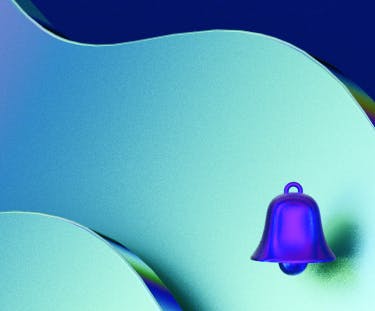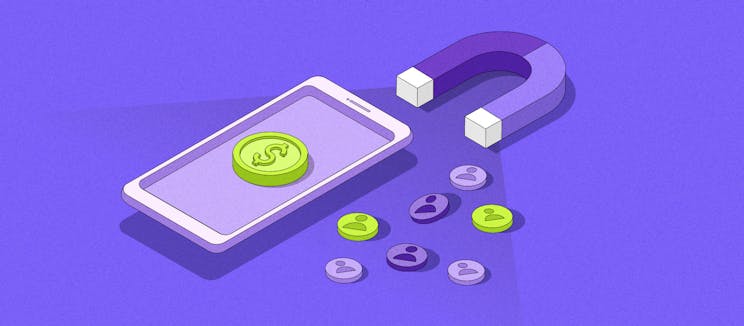Top 11 customer loyalty program examples [2024 update]
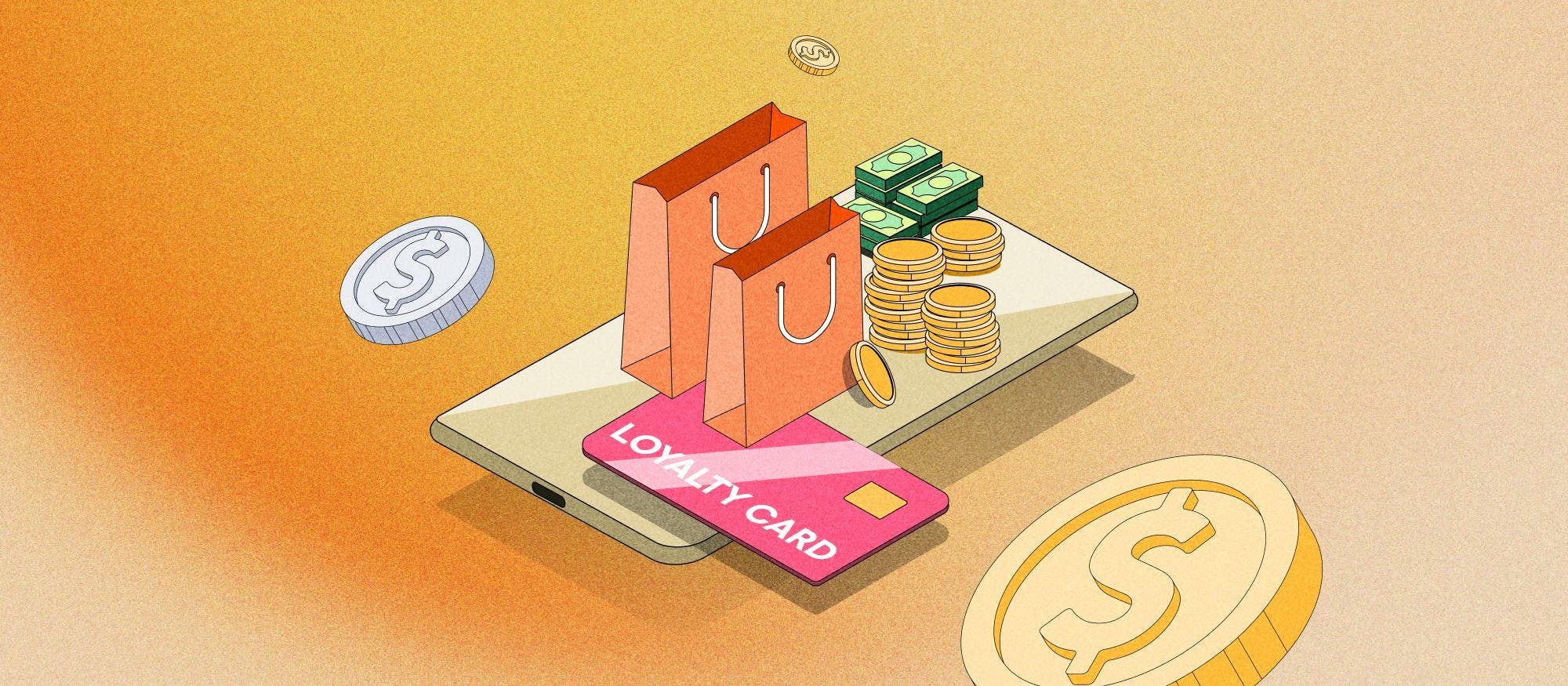
What is a customer loyalty program?
A customer loyalty program, rewards program, or simply loyalty program, is a business strategy designed to reward customers for their repeated business, encouraging continued patronage by offering benefits such as discounts, rewards, or exclusive offers. Customer loyalty programs aim to enhance customer retention and increase brand loyalty by incentivizing purchases and engagement.
Through personalized experiences and tailored rewards, customer loyalty programs collect valuable data on customer preferences and buying behaviors, enabling businesses to refine their marketing strategies and product offerings. Effectively, customer loyalty programs not only foster a deeper connection between brands and their consumers but also drive sales growth by transforming occasional buyers into brand advocates. For example, greater than 70% of Macy's sales came from its customer loyalty program.
Usually, the more loyal a customer is or the more they spend, the more benefits they receive from a rewards program. Not only is this great for retention, but it’s also a powerful way to convert a regular customer into an invaluable brand evangelist.
The most common incentives included in a customer loyalty program include:
Member-only discounts or products/services
Special services, like around-the-clock support or free shipping
Early access to new releases or big sales
A points system that leads to discounts and/or free items
Top 3 reasons that a customer loyalty program is essential in 2024
Loyal customers are a high-return business asset.
Moreover, with inflation increasing the cost of goods and pandemic-related supply chain inconsistencies still driving many consumers to shop around, nearly 30% of consumers in Q3 of 2023 enrolled in rewards programs or loyalty programs to save money. This has uniquely positioned customer loyalty programs as a powerful business tool for attracting, converting, and retaining new customers.
In fact, a Salesforce report found that most developed rewards programs hit the return on investment (ROI) point just one to three years after they’re established.
What kinds of returns are we talking about? In a nutshell:
Customer retention
Revenue growth
Brand differentiation
Let’s take a look at each.
1. Customer retention
Zendesk found that across all age groups and around the world, the majority of people are loyal to their favorite brands — meaning they go out of their way to shop from them again and again.
Age-wise, loyalty is the highest in Millennials and Gen Z and the lowest among Baby Boomers and the Silent Generation. The most loyal shoppers are in the U.S., followed closely by France. The lowest-loyalty shoppers are from Germany and Japan.
How do you create shopper loyalty that leads to retention? While 27% of shoppers say the shopping experience is why they’re loyal to a brand, nearly as many (26%) are loyal because of customer loyalty programs!
According to Deloitte, nearly half of all consumers participate in a rewards program at least once a month. This means that loyalty programming can be a great way to increase the frequency of those loyal shoppers’ visits, even if you have a longer sales cycle.
2. Revenue growth
On top of building an empire of frequent, repeat shoppers, loyalty programs also grow revenue. McKinsey found that members of loyalty programs were 30% more likely to spend more money with the brand. That number doubled to 60% when the program was pay-to-play (more on that later).
3. Brand differentiation
Yet another key benefit of building a loyalty program is differentiation. More than 80% of businesses say a loyalty program has helped them stand out. That’s critical because, after all, businesses need to attract a great audience before they can sell — and keep the audience coming back for more.
Knowing all of this, it’s no surprise that loyalty programs were one of the top five most effective owned-marketing tactics, according to a 2022 marketing survey from Forrester.
It’s easy to see that, when executed correctly, a customer loyalty program can be a win for both consumers and businesses.
Ready to win? Let’s kick off the discussion around building your rewards program with a walk through the various structures you can try out.
6 core types of customer loyalty programs your business can implement
Not sure how to put together a rewards program in a way that entices consumers? Here are some of the top loyalty program options to inspire you.
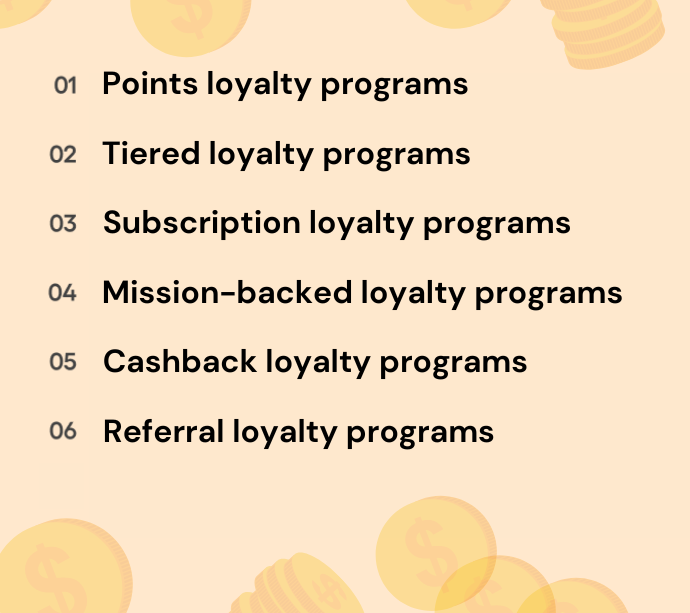
Points loyalty programs
Points-focused loyalty programs usually provide customers with points related to the number of purchases or the amount of money spent. Points may also be associated with things like engaging on social media, being a customer for a certain number of years, and so on.
In these rewards programs, points can usually be exchanged for discounts, exclusive products, and more.
These types of customer loyalty programs are so popular because they apply gamification, the practice of adding game-like elements such as competition, leaderboards, and of course point scoring into everyday systems to make them more exciting and rewarding. If you ever find yourself especially engaged in a loyalty program or something like getting a new certification for your job, that's probably because gamification is involved!
Later, we’ll explore how Starbucks takes points and gamification to the next level with a cutting-edge, cryptocurrency-based loyalty program.
Who’s it for?: This type of program is one of the most common when it comes to customer loyalty, as it’s well-suited for most businesses, especially those with a shorter sales cycle.
Tiered loyalty programs
Loyalty programs include tiers with various levels that provide escalating rewards and benefits. These tiers can be based on a point system like the above, the dollar amount spent, or another form of engagement.
While these rewards programs can require a little more effort to administer, they may also prove more successful in fostering customer loyalty as they gamify the process of racking up points and ascending the tiers.
In the next section, we’ll show how Mailchimp & Co’s tiered loyalty program encourages engagement by increasing the benefits at each step.
Who’s it for?: Tiered loyalty programs are especially fitting for premium products as they build on the exclusive nature that’s desired in the premium offerings space.
Subscription loyalty programs
In subscription-based loyalty programs, customers commit to a recurring fee to enjoy perks, exclusive products/services, and other offerings with perceived value.
Later in this blog, we’ll talk specifically about how U.S. Soccer bases their loyalty club around the subscription model — and also features tiers like the last example.
Who’s it for?: Due to the up-front payment required, it can be more difficult to convert customers into this type of loyalty program. That’s why it’s ideal for businesses that offer items that fall into the less-expensive and/or frequently-needed category.
Mission-backed loyalty programs
A loyalty program based on mission involves a business allocating a percentage of its profits to a charitable organization with each sale — instead of (or in addition to) providing customers with rewards directly.
Later, you’ll see a real-life example of how Pampers brings its mission of child wellness into its loyalty program through charitable donations.
Who’s it for?: This approach allows brands to actively support various causes, making it best for businesses with a clear mission and the types of customers who are big believers in giving.
Cashback loyalty programs
In a cashback incentive program, customers receive a percentage of their expenditures back in the form of cash or cash equivalents. Today, 90% of consumers actively seek out cashback programs when shopping online.
Revolut, a global bank we’ll talk about more in a bit, offers cash back to loyalty program members. Members are rewarded based on another core element of loyalty programs: referrals.
Who’s it for?: Just like points-based loyalty systems, cashback programs are great for pretty much all businesses — especially those that specialize in faster sales and lower-cost offerings (so you don’t break the bank, pun intended).
Referral loyalty programs
A referral-based loyalty program compensates customers for promoting a business to their friends and family. Usually, participants receive a distinctive code that tracks their referrals. After that code is used a certain number of times, a customer can redeem points or cash based on how the reward system is set up.
Since Revolut offers such a high-value reward — cash — as part of their referral loyalty program, they have a few stipulations as to what they consider a referral. You might see this in other referral programs, too, to prevent people from abusing the system.
Who’s it for?: Brands with share-worthy offerings, most likely B2C, will likely see the most return on referral-based loyalty plans.
Top 11 customer loyalty program examples
Here are 10 successful loyalty program examples from several brands that are carving out their space and establishing customer loyalty despite harsh competition.
Mailchimp & Co
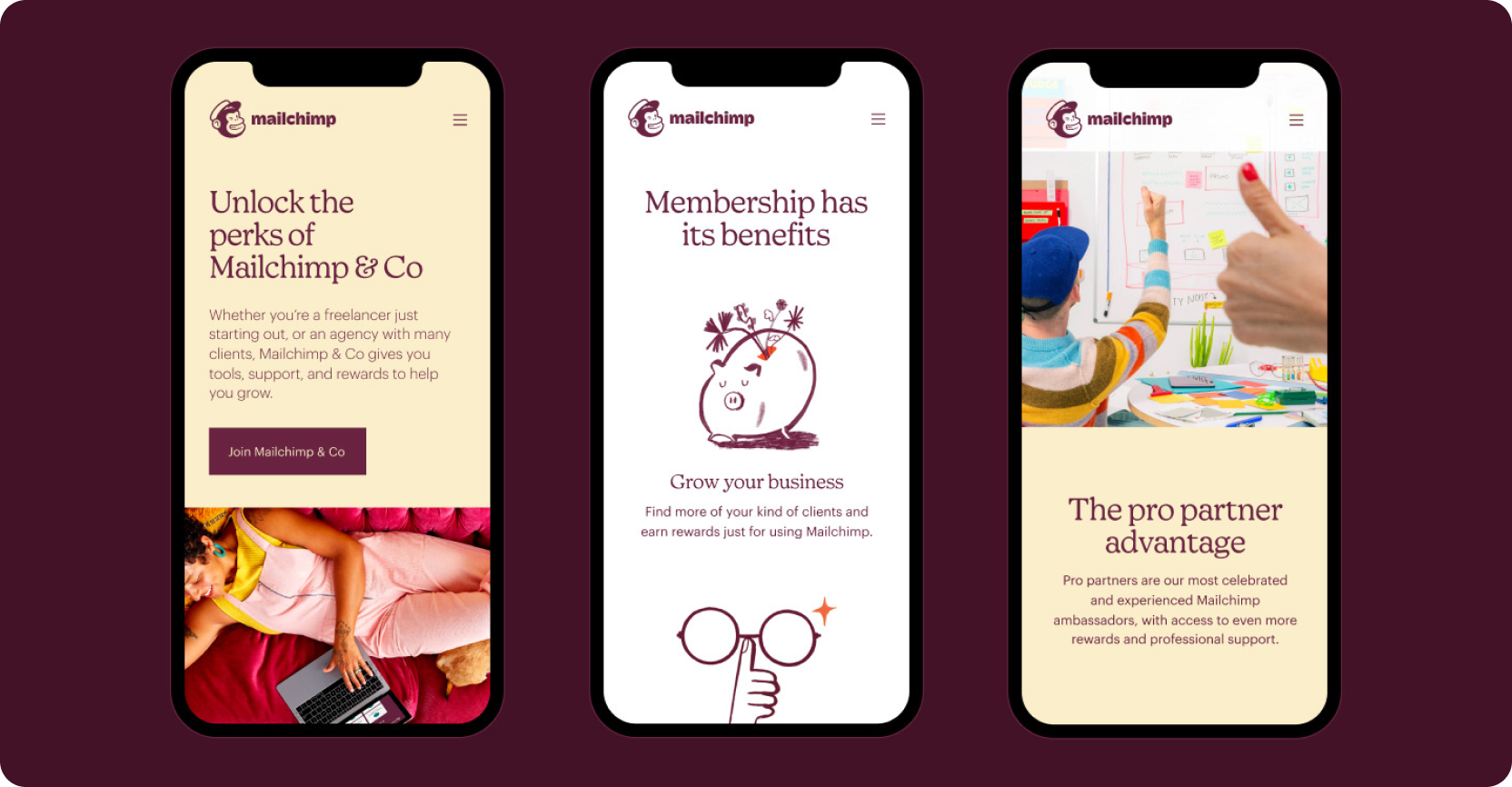
Mailchimp & Co is a loyalty program that Mailchimp offers to agencies and freelancers who bring the clients they serve onto the Mailchimp email marketing platform.
As they move up through the tiers, members can enjoy more and more benefits, including access to an educational academy, personalized customer support, first dibs on new products, a rewards program, and more.
While the rest of this section will focus on loyalty programs in the B2C space as they’re much more common, we wanted to share this B2B loyalty program example to prove that business-focused rewards programs are possible if that’s your target audience — and the rewards program doesn’t have to be boring!
Starbucks Odyssey
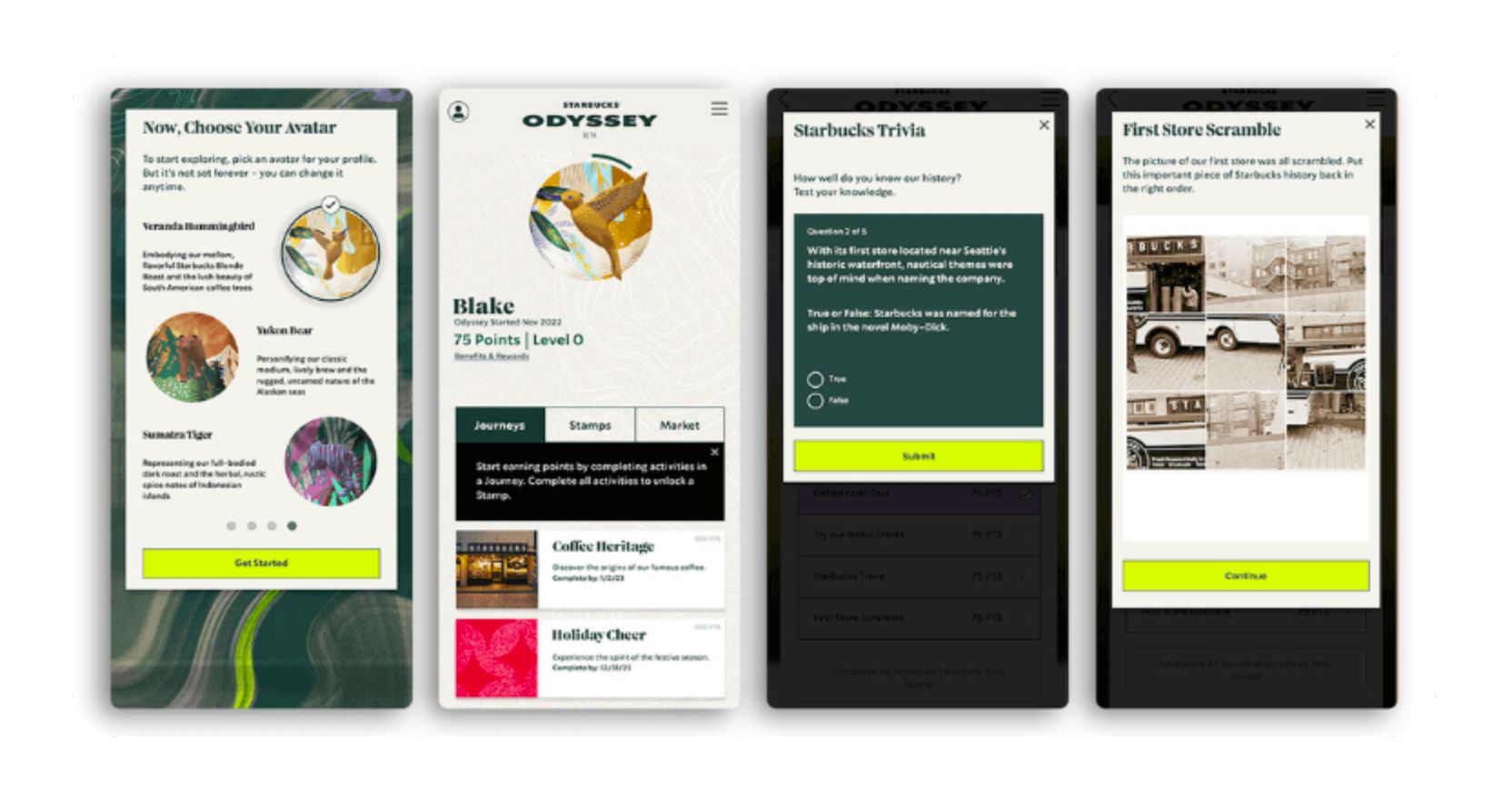
We know, we know, everyone mentions Starbucks when it comes to loyalty examples. And for good reason — it works! It’s said to contribute to almost 60% of the brand's revenue.
We’re going to tell you about an even more interesting loyalty scheme from the brand: Starbucks Odyssey.
Powered by Web3 technology, the Starbucks Odyssey app has been dubbed “a loyalty reward program on Web3 steroids.” This rewards program serves participants with interactive activities called "journeys", which users can complete to acquire Journey Stamps (which are NFTs) and Odyssey Points. These items can, in turn, be used to unlock benefits and experiences such as free coffee and event invites.
Though the program is still in Beta and new members must join the waitlist (and the Starbucks Rewards program if they’re not already part of it), early reviews indicate that it’s a well-thought-out system with great customer rewards that offers a valuable lesson for other businesses on gamifying loyalty.
MSI Reward Program
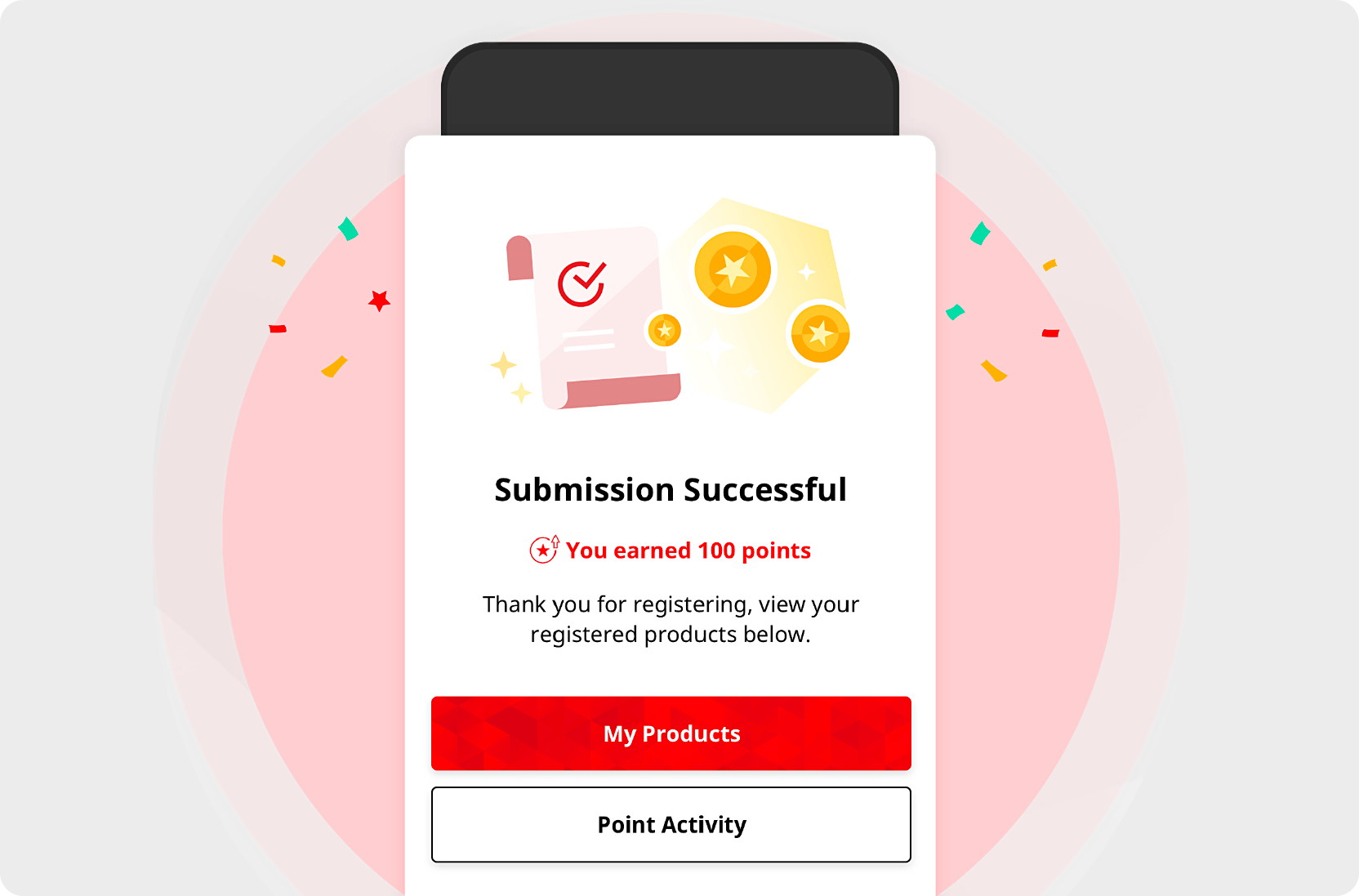
The reward program from MSI, a gaming hardware company, is a great example of bringing together several types of rewards programs. It includes points, rewards (like vouchers for Netflix and Zalando!), and exclusive access — all built into a tiered system.
Participants don’t only move up in the program by making purchases; they can earn points for creating an account and sharing their birthday, as well as taking surveys, logging in to the app, referring friends, and more. It’s engaging for customers and creates an open line of communication to them for the brand.
As an added benefit, MSI gets valuable personal data from customers. They can then use this data to serve even more personalized rewards and marketing campaigns.
Pampers Club
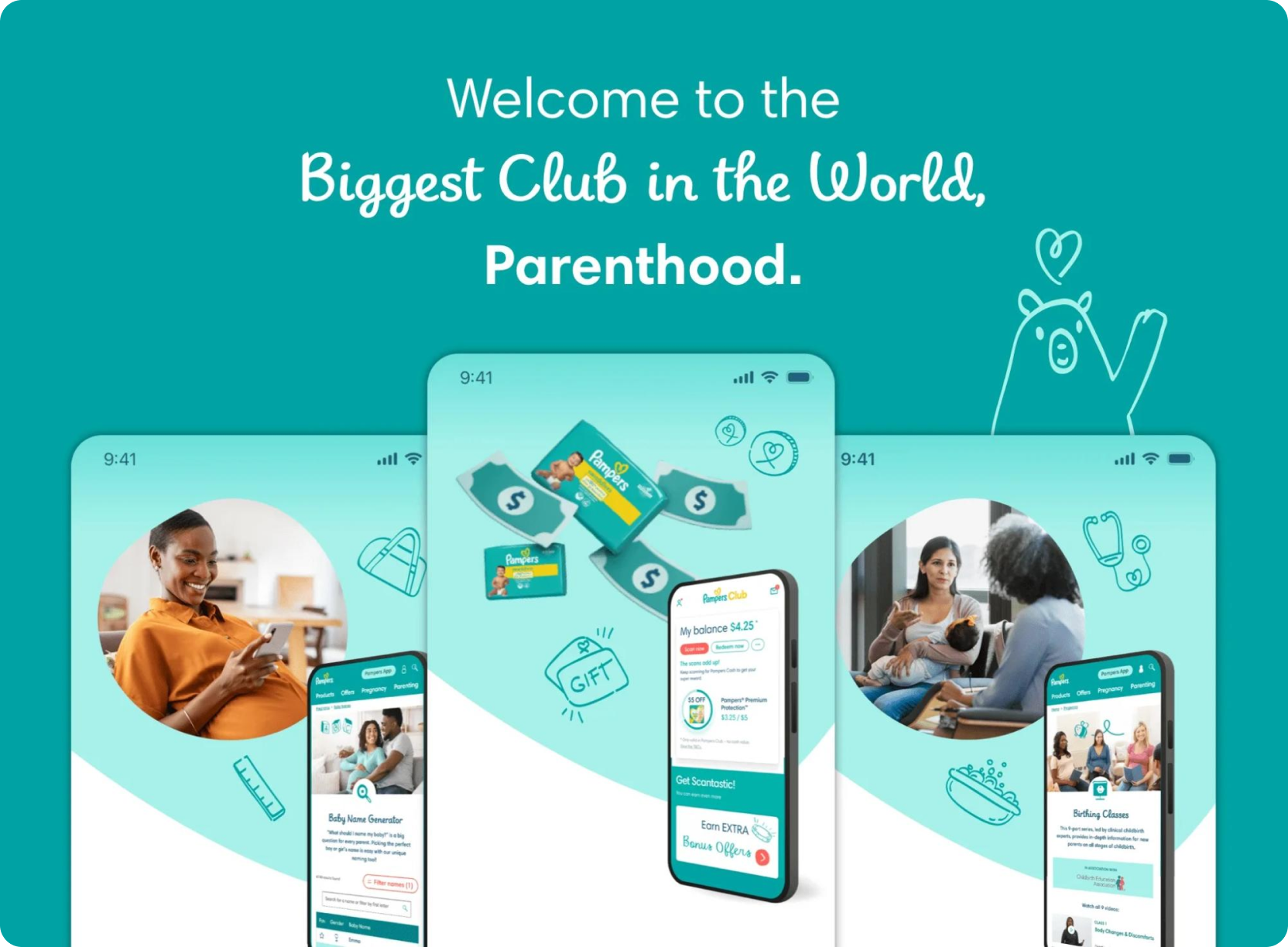
As parents know, diapers are some of the most expensive supplies young kids need. This is why Pampers, a supplier of diapers and other baby accessories, introduced Pampers Club — a mobile app-based loyalty program.
Caretakers can use the app to rack up Pampers Cash on their purchases, which can, in turn, be used to buy more Pampers products. It’s similar to credit card points, but for diapers and wipes!
The app isn’t only about getting cash back; it can also be used to save a list of your favorite items and has a points system built in for even more rewards. Some of these rewards fall into the “mission-backed” type of loyalty program described above, offering members the chance to convert points into a donation for a charitable, child-focused cause.
Dunkin’ Rewards
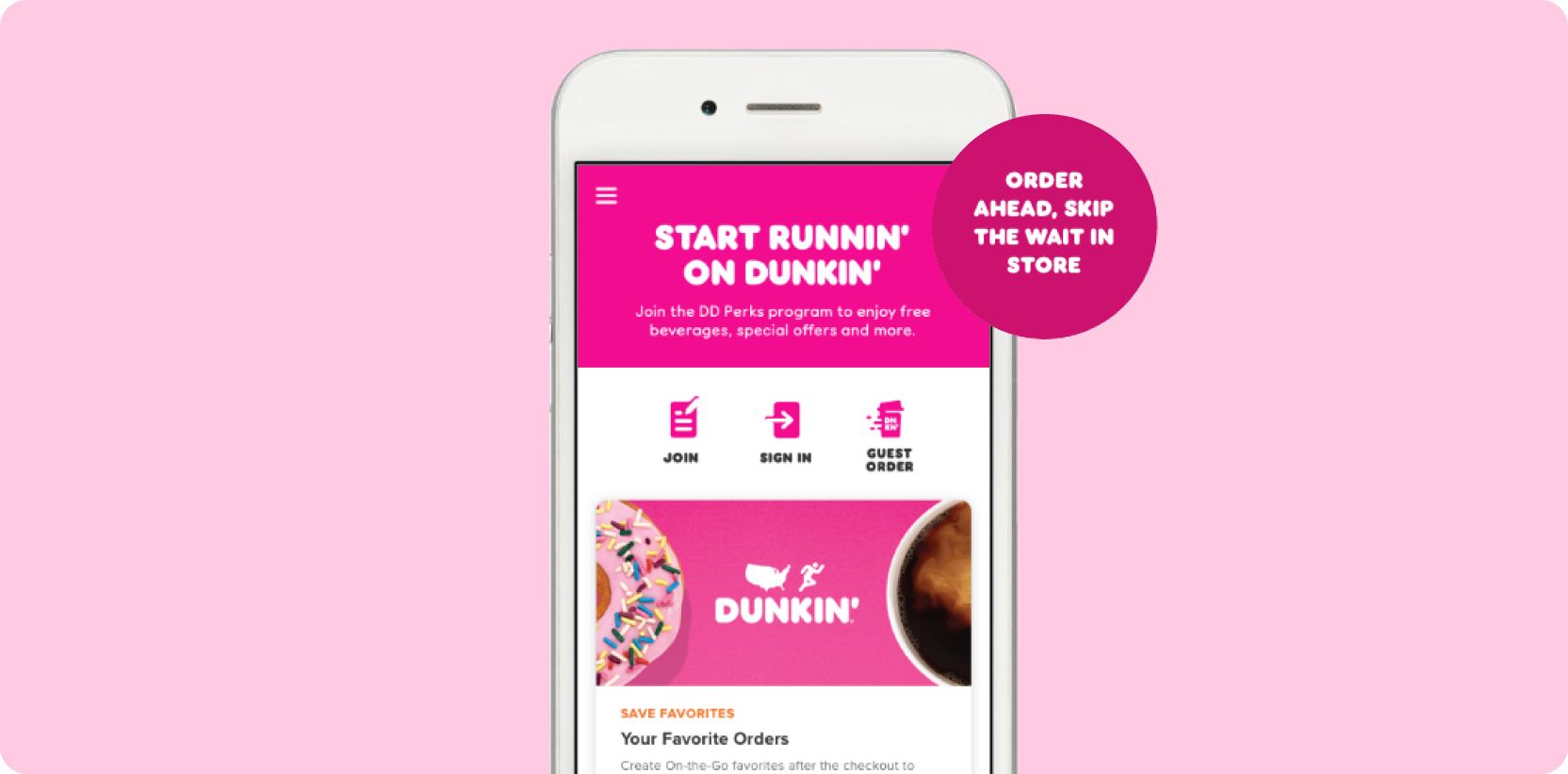
Dunkin’s mobile app isn’t just for ordering your morning fix on the go; it also features their Dunkin’ Rewards program.
The purchase-based point system is as simple as the app is beautiful. Plus, members can boost points with more visits, enjoy 3x points when they visit around their birthday, as well as unlock exclusive discounts and even fun product surprises. Points can be turned into free food and drinks.
Dunkin’s brand loyalty program isn’t too different from many of the options out there; however, its uniqueness lies in the ease with which it fits into Dunkin’s playful branding and commitment to customer connection. This rewards program is one critical tool that helps Dunkin stand out as a brand and remain relevant in the highly competitive coffee chain space.
7-Eleven’s 7Rewards
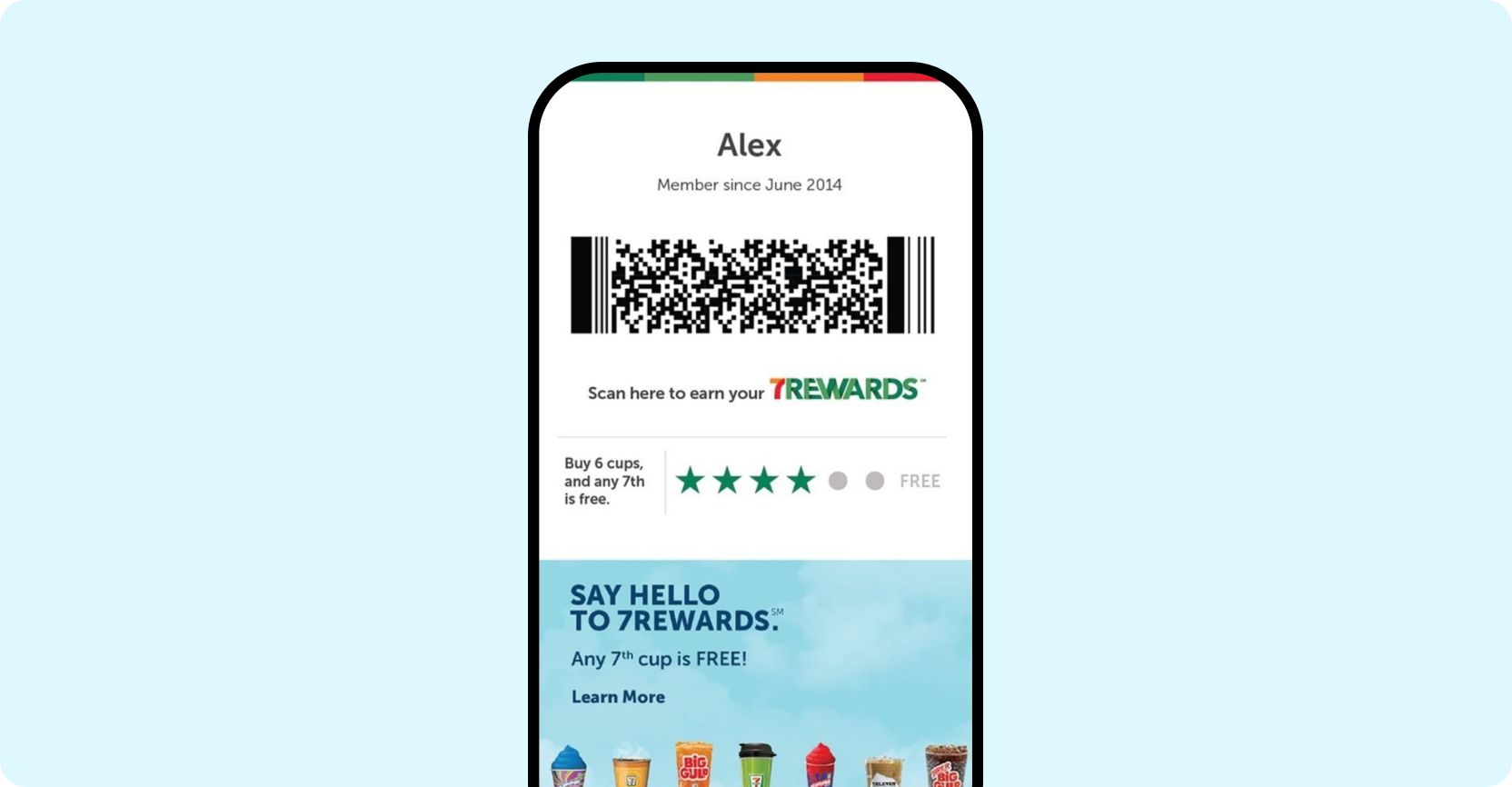
7Rewards, a loyalty program that can be accessed via the 7-Eleven app, offers people exclusive deals on and spending-based points toward things they were likely going to purchase anyway!
The convenience store app doesn’t stop there. It can also be used to find your nearest store, shop, and pay in a contact-free manner - and even save on fuel!
While it’s a simpler one, we wanted to showcase this customer loyalty program as it feels like a natural addition to the 7-Eleven app and fits in perfectly with the convenience store shopping experience.
Revolut Referrals
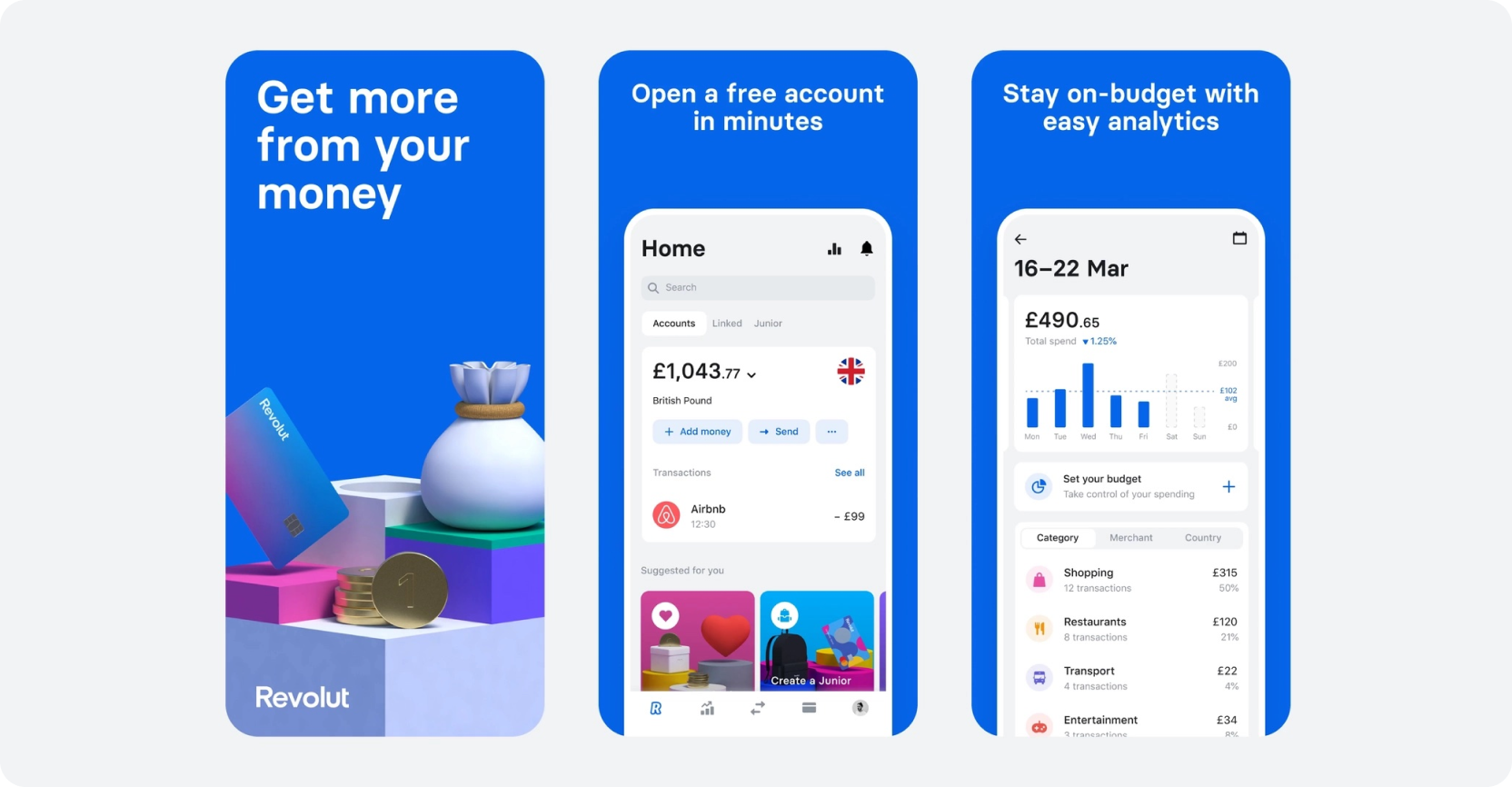
Revolut is a U.K.-based financial app company. It supports millions of customers in over 100 countries and regions, with a focus on helping customers spend, save, and share money more wisely.
To spread their mission and their reach, they offer a simple referral-backed loyalty program.
Revolut users can get cash credited to their account when they use the app to refer a new user, and that person completes required steps such as opening an account, ordering a card, and spending a certain amount.
It is interesting that Revolut’s referral program isn’t simply automated. Instead, it’s personalized to each user with regards to the number of people that can be referred and the amount of cash rewards that users can earn for each referral. This shows a heavy investment in the program and indicates that it is likely a healthy growth channel.
Tesco Grocery & Clubcard
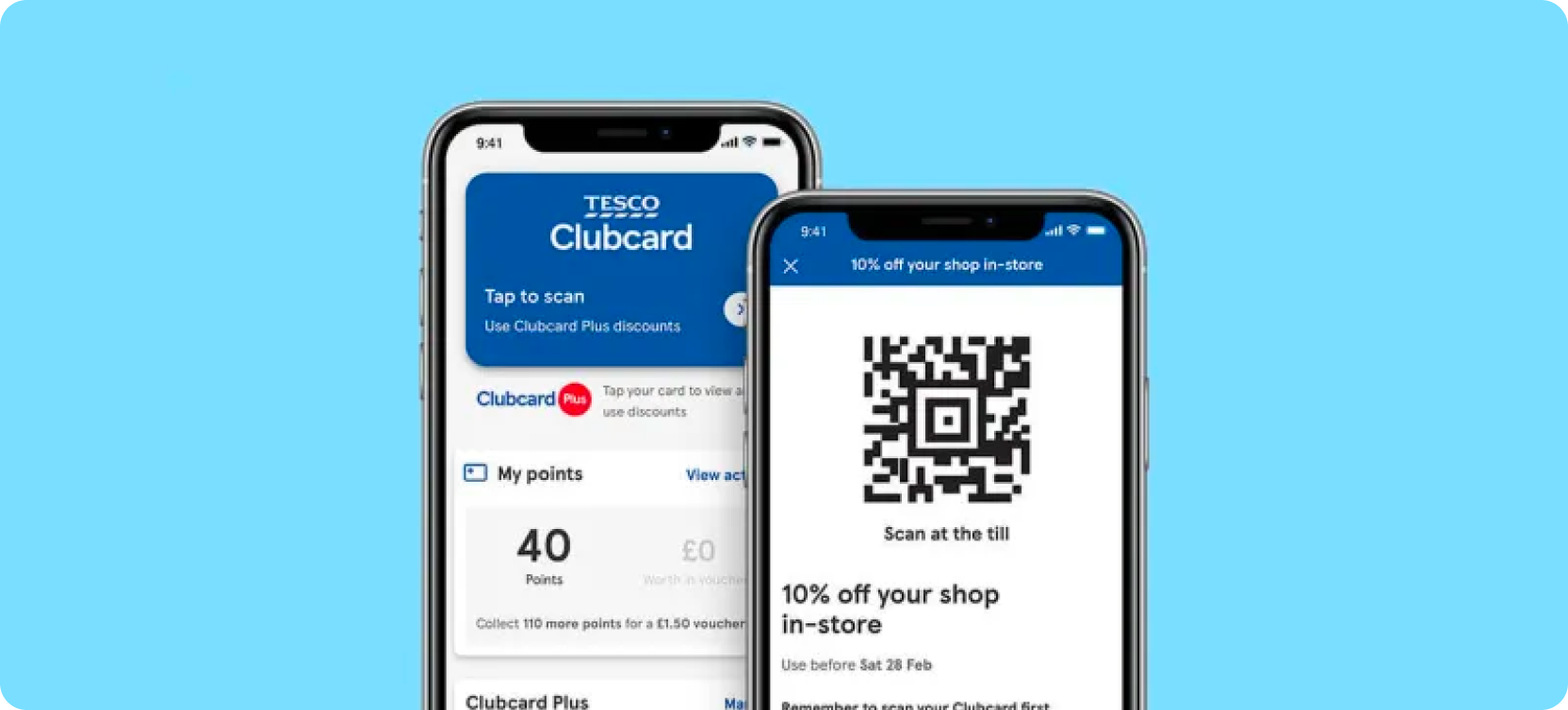
Tesco is a massive multinational grocery and merchandise store that first launched a customer loyalty scheme, Tesco Clubcard, in 1995.
Today, that loyalty program lives in the Tesco Grocery and Clubcard app. There, shoppers can digitally make lists based on real-time stock info, access deals and exclusive pricing, and set up a delivery or quick pickup. Points are rewarded based on money spent and can be redeemed for shopping vouchers or used towards purchases from Tesco’s partners.
This well-integrated loyalty program boasts an admirable model that most retailers should be able to mimic to create a better connection with modern consumers.
U.S. Soccer Insiders
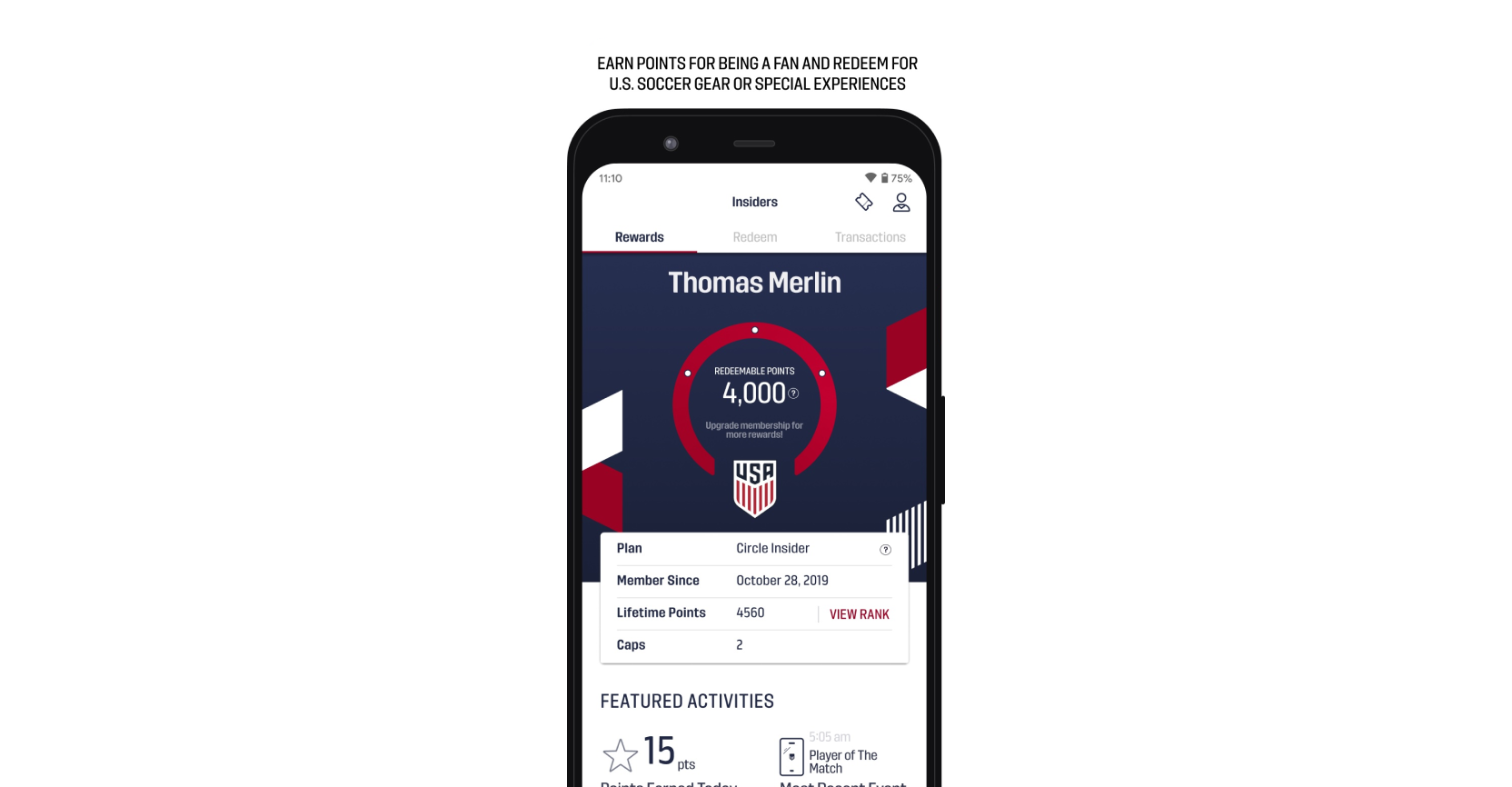
From U.S. Soccer comes the Insiders loyalty club, where super fans can use the U.S. Soccer app to select the official Player of the Match, access presale tickets, subscribe to exclusive newsletters, and earn points for rewards from watching in-app content, attending matches, purchasing tickets, and more.
That’s just at the free level! The paid tiers, which range from less than $50 to $10,000 per year, have a variety of benefits. At the lower end, you have event invites and exclusive access to World Cup tickets. At the highest level, members get VIP pre-game tour passes with every match.
This is a great example because while we still don’t see many paid loyalty memberships in the wild, we know they can work — and work well. Research indicates that paid loyalty program members spend more money, purchase more often, and remain more loyal over time.
Amazon Prime

This subscription-based loyalty program offers members free two-day shipping on eligible purchases, streaming of movies, TV shows and music, exclusive shopping deals, and more. This broad range of benefits caters to various aspects of consumers' lives, from entertainment to convenience in shopping, creating a compelling reason for customers to join and stay with the program. Its uniqueness lies in this breadth of benefits that go beyond traditional shopping rewards, effectively locking in customer loyalty through a variety of services and conveniences. This convenience factor, as well as the sense of exclusivity (for example, Prime Day) and belonging it creates among its members, is a significant driver of the program's success.
Furthermore, the annual or monthly fee model of Amazon Prime creates a psychological incentive for members to make the most of their subscription. Once customers have paid their membership fee, they are more likely to shop on Amazon to take advantage of the free shipping and other benefits, thereby increasing their purchase frequency and loyalty to Amazon.
Amazon Prime's customer loyalty program is widely regarded as one of the most successful and influential in the retail sector.
IKEA Family

IKEA Family is a prime example of an effective customer loyalty program that leverages both functional benefits and emotional engagement to build a lasting relationship with customers. This program's success can be attributed to several strategic elements that resonate well with IKEA's target market—families and home enthusiasts looking for value, convenience, and a sense of belonging.
Unlike many loyalty programs that require a purchase or a fee to join, IKEA Family is free, lowering the barrier to entry and encouraging a wide range of customers to sign up. This inclusivity helps IKEA build a larger database of customers, which in turn facilitates more personalized marketing efforts through wider data collection, emotional engagement through the IKEA Family branding, and better customer insights. Next, IKEA Family offers a wide range of benefits that go beyond monetary savings - such as free coffee or tea in IKEA restaurants and additional time for kids in Småland, the in-store play area. In addition, benefits like early access to sales, exclusive product offers, and special events like workshops and seminars add value to the membership. These offerings encourage frequent visits and deepen the customer's engagement.
By continuously offering value and fostering a sense of belonging, IKEA successfully cultivates long-term relationships with its customers.
Taking customer loyalty program examples to the next level
Those are some great customer loyalty program examples in action, right?
If you find yourself wondering what it is that makes the really successful and enjoyable loyalty memberships tick, we have some insights! In a nutshell:
Product-market fit: The degree to which the product meets the demand of the intended market
Customer communication: Targeted, relevant, personalized communication that educates, informs, or entertains the audience
The first ingredient is product-market fit. That’s the degree to which the product meets the demand of the intended market. In this case, it indicates how well the loyalty program matches customer needs.
The second ingredient, which is what really ignites the relationship to turn customers into brand evangelists, is magical communication! This works whether we’re talking B2C customer comms like many of the above examples, or B2B customer communication, if that’s your niche.
The best part is that no magic wand is required to pull off either of these loyalty-boosting customer communication strategies — just the right in-app messaging tech.
In-app messaging tech, most notably in-app notifications, makes it easy to communicate with users of your loyalty program, or people whom you want to join your loyalty program, by naturally integrating announcements, messages, reminders, discounts, and other notifications into your mobile app.
In-app notifications can open up both B2C and B2B customer communication channels where you can connect by sharing valuable contextual information, guidance, community-building assets, and a sprinkle of fun surprises.
Intrigued?
Then let’s cover how to build in-app messaging with the best tech available.
Build your own stellar customer loyalty program example with Sendbird Notifications
Providing the customer experience that consumers demand in exchange for their money, loyalty, and referring power hinges on your ability to meet them where they are with modern, personal messaging.
How exactly can you serve unique and engaging loyalty communication at scale?
By building modern in-app notifications with Sendbird, you can open up the app-based communication pathways that your support and marketing folks need to grow your loyalty program, customer retention, and revenue.
At Sendbird, we empower businesses to remain focused in their areas of expertise by providing an easy-to-integrate communications API platform. This way, you can construct your very own Notification Center. Below is an example of what this might look like:
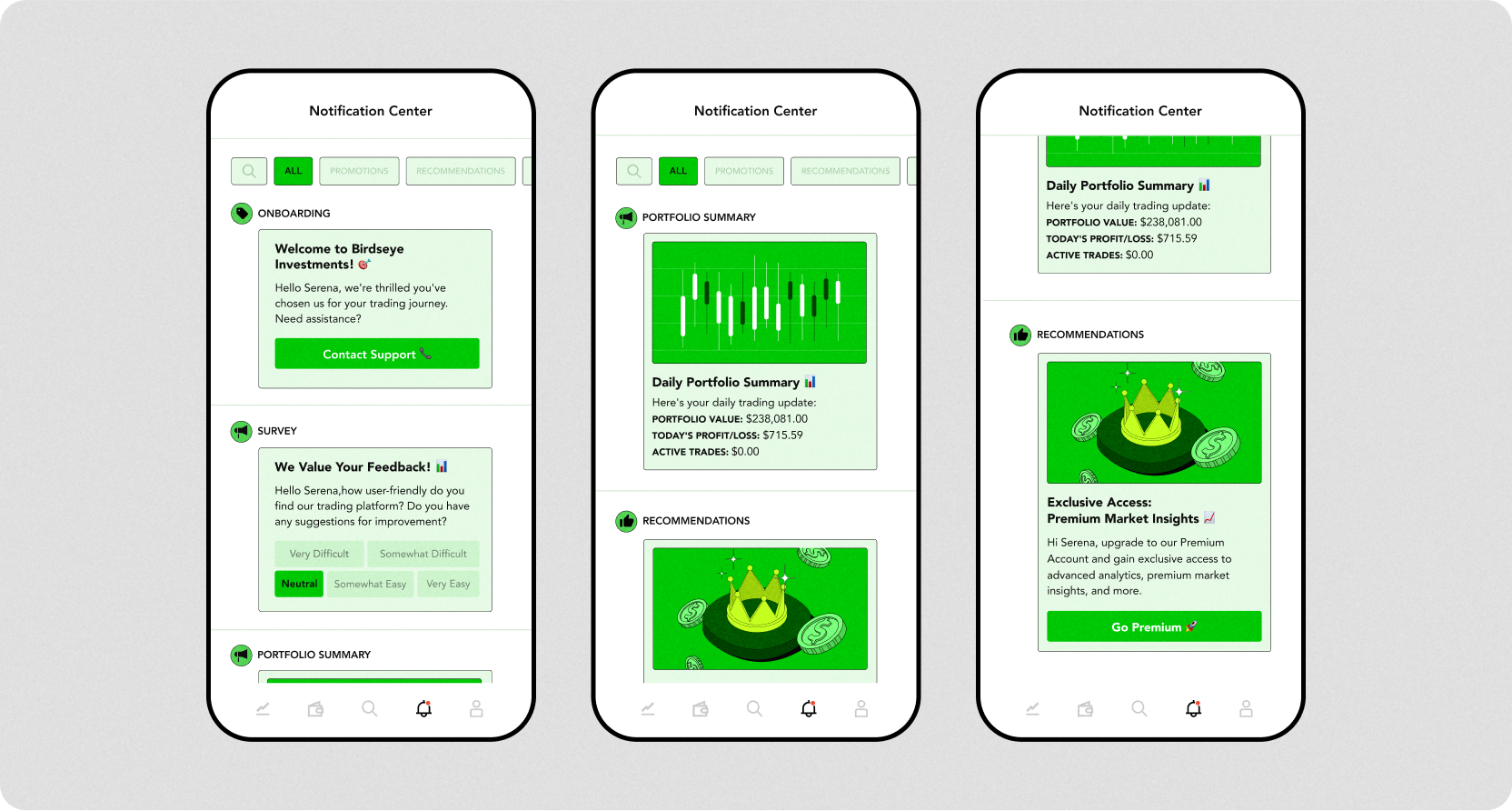
Once that’s spun up — which can be done in just a few days with our developer-ready resources — you can then customize it to your heart’s content and upgrade your customer loyalty program with robust app-based outreach.
What might this look like for the above customer loyalty program examples, or for your own rewards program?
How in-app notifications can boost the above customer loyalty program examples
Here are the top 7 examples of how in-app notifications like the above can be effectively used in a customer loyalty program:
Welcome messages: Upon joining the customer loyalty program, a personalized welcome message can greet new members, making them feel valued.
Points and rewards updates: Notify users about their current points balance, rewards for which they are eligible, and progress to reaching the next tier. This can motivate users to make more purchases to reach the next tier, especially in the tiered loyalty programs in the customer loyalty program examples above.
Exclusive offers: Send in-app notifications about exclusive offers and discounts only available to rewards program members. This creates a sense of exclusivity and encourages repeat business.
Event invitations: Notify loyalty program members about exclusive events, such as special in-store events or product launches. This can increase the perceived value of being a loyalty program member.
Feedback requests: After a loyalty program purchase or major interaction, send notifications asking for in-app feedback. This shows customers that their opinions are valued and can provide valuable insights for improving the rewards program.
Loyalty program updates: Keep members informed about any changes or improvements to the customer loyalty program, such as new ways to earn points, additional benefits, or updated terms.
Reminder notifications for unused points or rewards: Send reminders about points or rewards that are about to expire. This encourages customers to take action to redeem their rewards and get the maximum benefit from the rewards program.
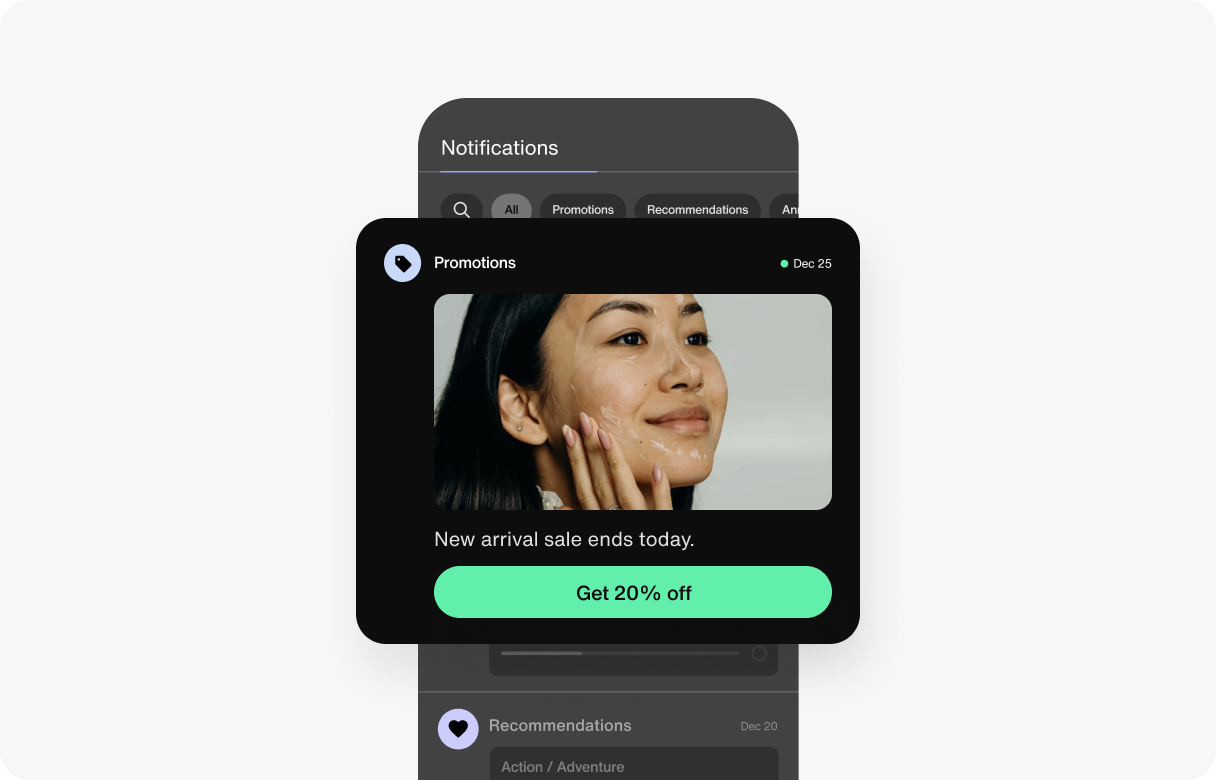
Why are in-app notifications such a powerful channel that can boost your customer loyalty program?
In addition to the in-app notification use cases mentioned above, there are several other reasons that a Notification Center can take your customer loyalty program to the next level.
First, because you own your in-app notifications, all users are automatically opted-in. This means that you have their attention immediately. Next, in-app notifications can imply that users never miss an update from the rewards program. For example, Sendbird's Notification Center, in particular, offers a centralized screen where every notification lives, so your app users will always have a consolidated screen where they can stay informed.
Another reason is that Sendbird Notifications support images, videos, buttons, polls, and even two-way messaging for deepening your dialogue. This means that the chances of miscommunication are greatly reduced, and users have easily navigable, rich notifications. Finally, because you can send personalized, targeted, and highly relevant notifications, the chances of users taking the desired action - such as completing a purchase or redeeming points - will increase.
With Sendbird, in-app notifications aren’t an interruption; they’re a convenient, dynamic, and fully integrated channel where you can create connections, deliver thoughtful personalization, as well as drive app retention and business growth.
If you want it all out of the box, we recommend the “buy then build” approach. With just a few lines of code, you can have Sendbird’s full Notification Center working in your app. Check out our docs to see just how simple it is!
This model has served our customers well. Check out how Porter, a logistics company, implemented in-app notifications with Sendbird and cut their operational costs by 30% by moving away from SMS. Or, how Southeast Asia’s leading travel platform, Traveloka, grew retention to an impressive 30% after adopting Sendbird to unify customer care communication.
Want to start writing your own success story? If customer loyalty, and all the benefits that come with it, is your goal, then sign up for Sendbird. You can start a free trial (no credit card or commitment required!) or contact us to learn more!
